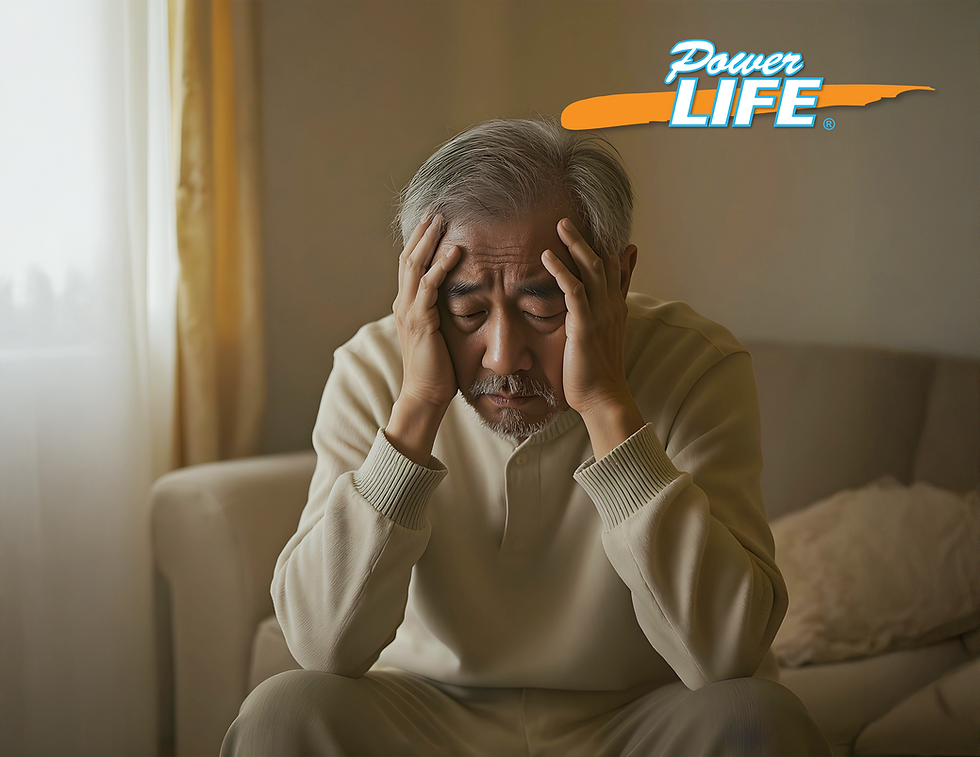CoQ10 Power Up from Inside Out
- Powerlife Care

- Jan 28, 2022
- 3 min read

Coenzyme Q10, also known as CoQ10, is a compound that helps generate energy in our cells. One of the major roles of CoQ10 is to help convert food we eat into energy to power our bodies and brain. It is an antioxidant that can be found everywhere in the body, but more concentrated in the mitochondria of our cells. The level of CoQ10 is the highest in organs with high rates of metabolism such as the heart, kidney and liver. As most cellular functions are dependent on an adequate supply of adenosine triphosphate (ATP), CoQ10 is essential for the health of virtually all human tissues and organs. Mitochondria are known as the powerhouse of cells and they are in charge of energy production. CoQ10 assists in ATP production in the mitochondria, function like the energy currency of life (1).

Fig 1. Mechanism action of CoQ10 (Rodick 2017)
The newly produced energy is enveloped in the molecule ATP which is broken down to transfer the chemical energy to mechanical energy for the muscles to move. CoQ10 from diet and supplements is absorbed from the small intestines into the lymphatic system which is bound to lipoproteins and formed in the intestinal cells after the ingestion of a fatty meal. CoQ10 is then transferred to the bloodstream from the lymphatic system. CoQ10 is a highly lipophilic molecule which is insoluble in water and has limited solubility in lipids, and therefore it is poorly absorbed in the gastrointestinal tract. Its absorption and uptake pathways are similar to Vitamin E, which requires emulsification and formation of micelles with fatty food constituents. Thus, CoQ10 intake with a meal can notably improve its absorption (2).
Different approaches have been used to improve the technological properties and bioavailability of CoQ10 such as reductions in particle size, use of oil suspensions, use of reduced CoQ10 (ubiquinol) and formation of molecular complexes. Studies have shown that formulations with the inclusion complex of CoQ10 and cyclodextrin, as well as reduced CoQ10/ubiquinol improved water solubility and stability of CoQ10. CoQ10 shifts back and forth between two states in a continuous cycle: ubiquinone and ubiquinol. Ubiquinol is the reduced form of CoQ10 whilst ubiquinone is the oxidized form. Ubiquinone, the oxidized form of CoQ10 must be reduced to ubiquinol to exert CoQ10’s functions after consumption and thus ubiquinol appeared to be a better supplemental form to enhance the CoQ10 status than ubiquinone in older men (3).

Fig 2. Ubiquinone vs ubiquinol.
CoQ10 is one of the most significant lipid antioxidants, which prevents the generation of free radicals and modifications of proteins, lipids and DNA. It has been reported that man disease conditions connected with increased generation and the action of reactive oxygen species, hence the concentration of CoQ10 in the human body decreases. The anti-oxidant function of CoQ10 is important in the plasma membrane by reducing vitamin C and E as well as an important regulator of lifespan in terms of normal aging. CoQ10 biosynthesis pathway is initiated in the cells, from the conversion of mevalonate, a key intermediate involved in the synthesis of cholesterol and dolichol and protein prenylation adducts. The pathway is tightly regulated both at the transcriptional and translational levels (4).
CoQ10 was reported to improve side effects from statin drugs, which CoQ10 was depleted by the drug. Considering the heart is the most energy-demanding organ in the body, it was surprising to know how statin could deplete one’s body main source of cellular energy. Besides that, it could also reduce the oxidative damage that leads ot muscle fatigue, skin damage, brain and lung diseases. CoQ10 also help to improve heart health and blood sugar regulation, as well as reducing the frequency of migraines (5).
As a nutshell, CoQ10 is a fat-soluble, vitamin like compound with many health benefits and helps in the production of cellular energy, as well as serves as an antioxidant. As CoQ10 production decreases with age, supplementation of CoQ10 benefits adults of every age.
References:
Saini R. Coenzyme Q10: The essential nutrient. J Pharm Bioallied Sci. 2011 Jul;3(3):466-7. doi: 10.4103/0975-7406.84471. PMID: 21966175; PMCID: PMC3178961.
López-Lluch G, Rodríguez-Aguilera JC, Santos-Ocaña C, Navas P. Is coenzyme Q a key factor in aging? Mech Ageing Dev. 2010 Apr;131(4):225-35. doi: 10.1016/j.mad.2010.02.003. Epub 2010 Mar 1. PMID: 20193705.
Pravst I, Rodríguez Aguilera JC, Cortes Rodriguez AB, Jazbar J, Locatelli I, Hristov H, Žmitek K. Comparative Bioavailability of Different Coenzyme Q10 Formulations in Healthy Elderly Individuals. Nutrients. 2020 Mar 16;12(3):784. doi: 10.3390/nu12030784. PMID: 32188111; PMCID: PMC7146408.
Hernández-Camacho JD, Bernier M, López-Lluch G, Navas P. Coenzyme Q10Supplementation in Aging and Disease. Front Physiol. 2018 Feb 5;9:44. doi: 10.3389/fphys.2018.00044. PMID: 29459830; PMCID: PMC5807419.
Littarru GP, Langsjoen P. Coenzyme Q10 and statins: biochemical and clinical implications. Mitochondrion. 2007 Jun;7 Suppl:S168-74. doi: 10.1016/j.mito.2007.03.002. Epub 2007 Mar 27. PMID: 17482884.
Rodick TC, Seibels DR, Babu JR, Huggins KW, Ren G, Mathews ST. Potential role of coenzyme Q10 in health and disease conditions. Nutrition and Dietary Supplements. 2018;10:1-11 https://doi.org/10.2147/NDS.S112119.




Comments